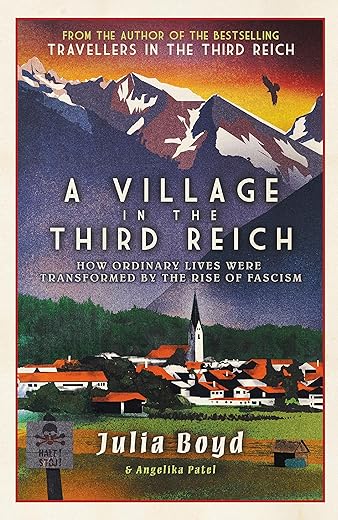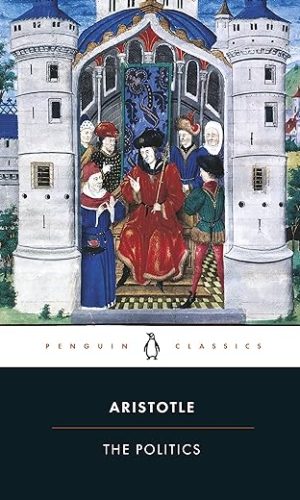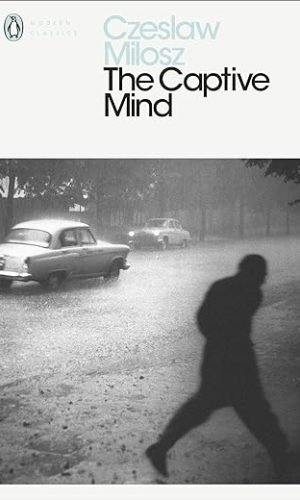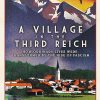A Village in the Third Reich: How Ordinary Lives Were Transformed By the Rise of Fascism – from the author of Sunday Times bestseller Travellers in the Third Reich
£1.90
A Waterstones Paperback of the Year 2022
A New Statesman Book of the Year 2022
‘Fascinating… You’ll learn more about the psychological workings of Nazism by reading this superbly researched chronicle… than you will by reading a shelf of wider-canvas volumes on the rise of Nazism.’Daily Mail
‘An utterly absorbing insight into the full spectrum of responses from ordinary people in extraordinary circumstances.’The Times
‘Boyd is an outstanding micro-historian.’iNews
___________
Hidden deep in the Bavarian mountains lies the picturesque village of Oberstdorf – a place where for hundreds of years people lived simple lives while history was made elsewhere.
Yet even this remote idyll could not escape the brutal iron grip of the Nazi regime.
From the author of the
Sunday Times bestselling
Travellers in the Third Reich comes
A Village in the Third Reich: an extraordinarily intimate portrait of Germany under Hitler, shining a light on the lives of ordinary people. Drawing on personal archives, letters, interviews and memoirs, it lays bare their brutality and love; courage and weakness; action, apathy and grief; hope, pain, joy and despair.
Within its pages we encounter people from all walks of life – foresters, priests, farmers and nuns; innkeepers, Nazi officials, veterans and party members; village councillors, mountaineers, socialists, slave labourers, schoolchildren, tourists and aristocrats. We meet the Jews who survived – and those who didn’t; the Nazi mayor who tried to shield those persecuted by the regime; and a blind boy whose life was judged ‘not worth living’.
This is a tale of conflicting loyalties and desires, of shattered dreams – but one in which, ultimately, human resilience triumphs.
These are the stories of ordinary lives at the crossroads of history.
___
‘Exceptional… Boyd’s book reminds us that even the most brutal regimes cannot extinguish all semblance of human feeling’Mail on Sunday
‘Masterly… [an] important and gripping book… [Boyd is] a leading historian of human responses in political extremis.’The Oldie
‘Gripping… vividly depicted… [a] humane and richly detailed book’ Spectator
‘Vivid, moving stories leave us asking “What would I have done?”‘ Professor David Reynolds, author of
Island Stories
“An absorbing, thoroughly recommended read”Family Tree magazine
‘Laying bare the tragedies, the compromises, the suffering and the disillusionment. Exemplary microhistory.’ Roger Moorehouse, author of
First to Fight
‘Compelling and evocative’All About History
‘The rise of Nazi Germany through the prism of one small village in Bavaria. […] Astonishing’ Jane Garvey on
Fortunately… with Fi and Jane
‘incredibly engaging’History of War magazine
‘Intensely detailed, exhaustively researched and rendered in almost cinematographic detail, Julia Boyd’s A Village In The Third Reich is deeply evocative, redolent of those times and truly revelatory. I learned so much. This is a book I will need to return to again and again, to relearn, refresh and remember. A triumph.’ Damien Lewis, author of
The Flame of Resistance
Read more
Additional information
| Publisher | Elliott & Thompson (5 May 2022) |
|---|---|
| Language | English |
| File size | 13418 KB |
| Text-to-Speech | Enabled |
| Screen Reader | Supported |
| Enhanced typesetting | Enabled |
| X-Ray | Enabled |
| Word Wise | Enabled |
| Sticky notes | On Kindle Scribe |
| Print length | 516 pages |










by Sixth Sense
What would I have done?
Never have I asked myself that question more until I read this book and Travellers in the Third Reich.
Julia Boyd and Angelika Patel’s research is like putting in place a piece of a jigsaw that was missing. We can see, hear and feel how the average German was charmed, then coerced and then completly trapped in an utterly, utterly terrifying and grotesque system. In this book the difference is that we get to peek behind their closed doors.
How easily it was done. How lucky are we all! Never again! A gripping and essential read.
I think this book should become a must read for any student learning about WW11 too.
by Fettler
I found this a fascinating and illuminating book, written in a way that states the way things were and how they developed, without hyperbole. The details of the lives of the Oberstdorfers and the tourists, refugees and the Nazis are so well stated and shared that it offers a seemingly unbiased setting out of what really went on from the arrival of Hitler on Germany’s stage, through his suicide to the actual end of the war.
If you have even a tiny interest in this period of Europe’s history, I believe you will find this book of interest. If you are really interested in this period, I would suggest it should be very high on your reading list; it is so well researched.
by Ben Calder-Smith
I thought this book was great with just one minor criticism. Early in the book, it states that Max Schmeling regained the world heavyweight championship in 1932. I only know this to be wrong as I am a huge boxing buff. He won it in 1930 and lost it in 1932, never to regain it (he had a chance in 1938 but was annihilated by Joe Louis in one round) This isn’t a big criticism and not particularly relevant to the text of the book BUT when I see one factual error, it makes me cynical in wondering how many more I would discover had I been an equally massive history buff. However, that doesn’t matter as I loved it and would even consider a trip to Oberstdorf to retrace the steps found in this book. Well recommended…..
by Glen Gruzy
A deep delve into growth of the Nazi juggernaut overtaking and submerging every aspect of ordinary Germans life and the dangerous and precarious existence under the regime. A dangerous time to be alive, even non- Jews had to watch their back at all times, even a slight slip-up could have disastrous consequences.
A book well worth reading!
by TT
Having really enjoyed this author’s other book, Travels through the Third Reich, I was delighted to come across this one – set in a town not far from where I lived when younger. I am glad I had not read it back in the 80s or it may have somewhat changed the way I looked at the area in which I loved to live. Reading it now, I am pleased to be able to imagine the events, knowing many of the locations. A fascinating way to show how many real Germans did not support what was happening in their name. So many sad stories in one.
by Kindle Customer empties
Well written and well researched. A fascinating look at one small village in Germany before, during and immediately after the Second World War.
by Cormac Bracken
Good read. Well written and researched. Very readable alternative view of life during WW2. Recommended.
by Vigilantius
How did the Nazis take over Germany so quickly and so comprehensively? Why wasn’t there more determined civil resistance from the beginning? What was life like for ordinary citizens under the Nazis? This large and deeply researched book seeks to answer these questions by taking a microhistory perspective: what happened in one Alpine village, called Oberstdorf – which was the long-time family home of the co-author, Angelika Patel, a German married to an Indian.
(Disappointingly but not surprisingly, this important investigation does not touch on major sub-text questions, such as: Could it have happened here? How particular was the unusual concatenation of circumstances which led to the rise of the Nazis? Are we all potentially Nazis, in the right circumstances? What gives someone the deep spiritual strength to resist mass indoctrination and fear?)
The Alpine village tale is well told, with convincing detail about how the few Nazi-supporting villagers used fear and the rule of corrupt laws to overthrow the basically normal and not anti-Semitic committees and local customs of this close community.
A mere two weeks after Hitler’s party won the largest share of the vote in the March 1933 general election, the supine President approved an Enabling Act which gave Hitler full powers to rule Germany without the Reichstag and to lock up anyone he wanted. The authors bring out how Germans liked to portray themselves as victims (of the Versailles treaty and of ‘Bolshevik’ conspiracies) even as they bullied and killed anyone who stood in their way. There was an untapped longing for revenge after the humiliation of World War One, which the victorious powers stoked by their inept policies – further whipped up by the deleterious effects of massive inflation and unrest in the 1920s.
A further critical factor was that soon after Hitler came to power in 1933, all municipal administrations had to swear allegiance to the Fuhrer. This weeded out low level resistance, which was still evident, here and there, but the decent, law-abiding middle ground was impossible to hold. Nevertheless, there were brave acts of defiance in Oberstdorf.
By focusing on particular individuals, with their family and personal history – available as a result of Patel’s remarkable research – the deep penetration of ordinary life by the Nazis is told with gripping detail. Small acts become life threatening. For example, in 1936 the new village Catholic priest, Josef Rupp (already known for his hostility to the Nazis) fought a losing battle to keep the village youth attending mass, despite the fact that all the boys were forced to join the Hitler Youth, where they were told they had to choose between allegiance to the Fatherland or the church. One well-meaning boy brought his predicament to the priest after he had been told that he would have to choose between God and Hitler. The priest comforted the boy and told him that he could give up being an altar boy and ‘remain a good Christian’ even as a Hitler Youth Leader. A short while, later, some other altar boys used the swastika flag (kept in the church tower) as a hammock in which to swing each other in a lively game. The flag split, and the boys rolled it up and put it back in its usual place. When the church sexton later hoisted the flag, ‘its tattered appearance was there for all to see.’ It was a serious enough offence for the sexton to be threatened with being sent to Dachau – which he was only spared when one of the boys bravely owned up. Such was the climate of fear.
Though the immediate history in terms of the aftermath of World War One is given, this book lacks broader, penetrating historical and longer term insight. Germany only became a country in 1860, bludgeoned and conned by its masterful Chancellor Bismarck, who taught the Germans – through a series of cynically manoeuvred wars – that strength guarantees victory, and morality is for the loser. The influence of German intolerant idealist philosophy should also be part of the story, as well as the dispersed nature of German society, with no large urban centre to nurture a truly powerful, united mercantile or working class – such as there was in London, Paris or New York (Berlin was tiny by comparison). Once the commanding political heights of Germany had been captured by the Nazis, there were no other major centres of power, besides the military, which was smarting in knee-jerk reaction to the huge defeat of World War One.
One other minor aspect of this fascinating and highly readable tale is that the principal author, Julia Boyd, is ungenerous in her acknowledgements: she makes only brief and grudging mention to the painstaking research of her co-author, Angelika Patel, without whom this book would not have been possible.